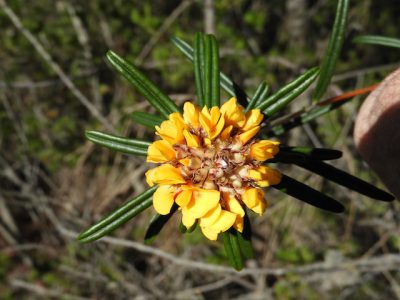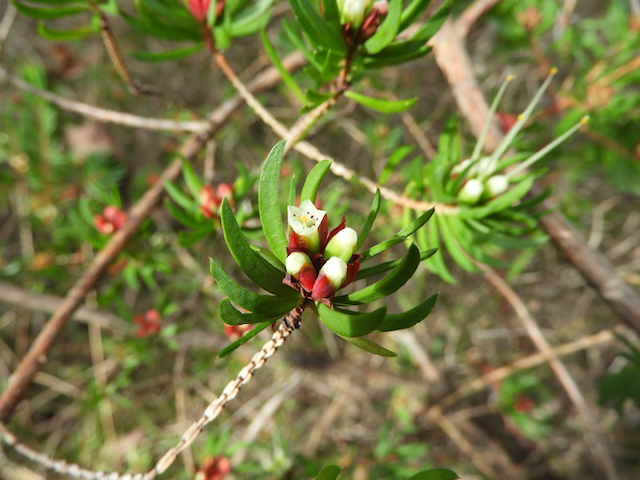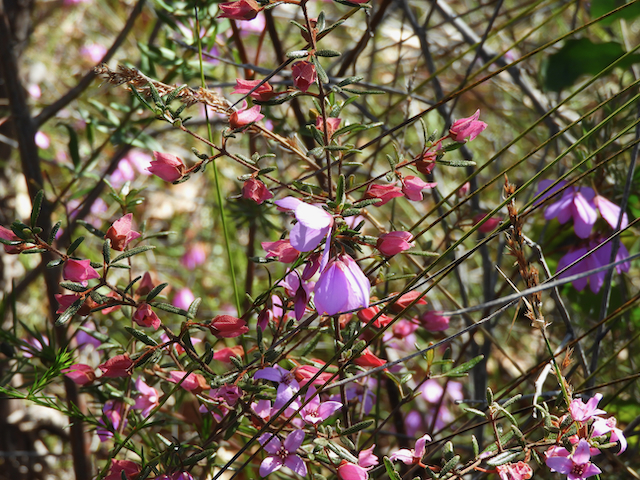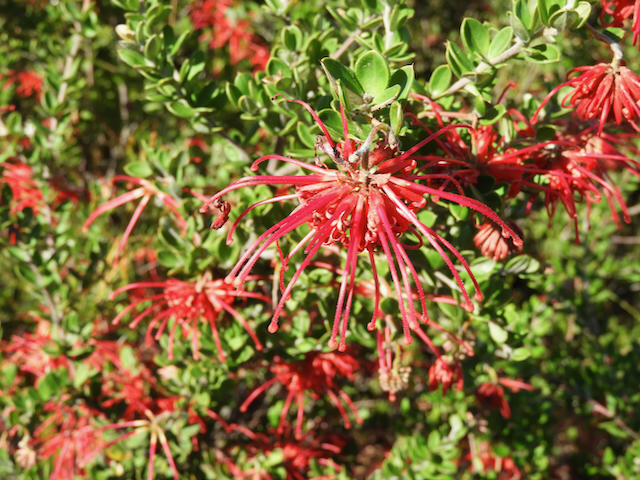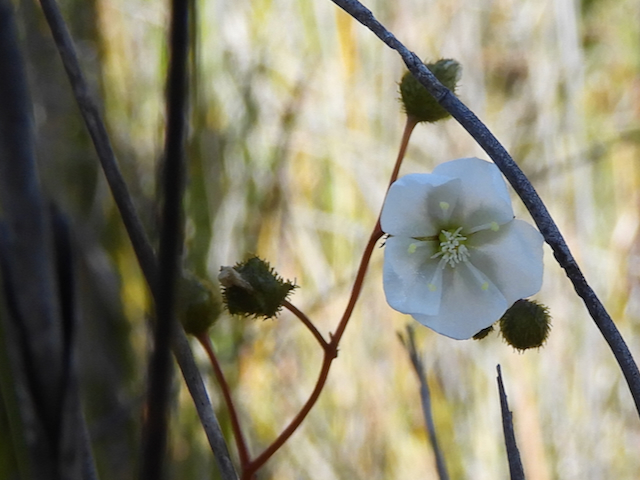I became a member of the Pea Study Group last year and last weekend, joined around 25 other APS members for a Pea forage weekend based in Gosford on the Central Coast.There were members from Victoria, Queensland and the ACT as well as more local people, most of whom I had met at various conferences and APS events.
We visited three locations on the Saturday, the first being a 2km return walk along a fire trail to the Warrah Lookout over Brisk Bay towards Barrenjoey lighthouse with a 180-degree panorama around Patonga. I didn’t have a list to tick off, just enjoying the many species we saw flowering, but still managed to photograph a dozen or so species including a couple of Boronias, some peas, of course, and Grevillea speciosa which was abundant and flowering its head off. I also liked the Tetratheca shiressii and a dwarf Tetratheca thymifolia, which I have decided to get one for my garden. Another plant I’d not seen before but which was very common and attractive in flower, was the spikey Acacia oxycedrus.
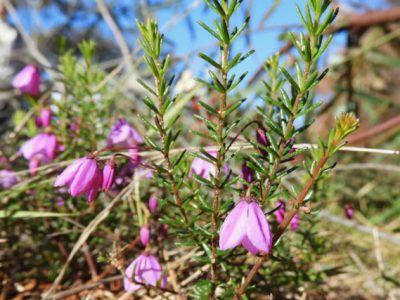
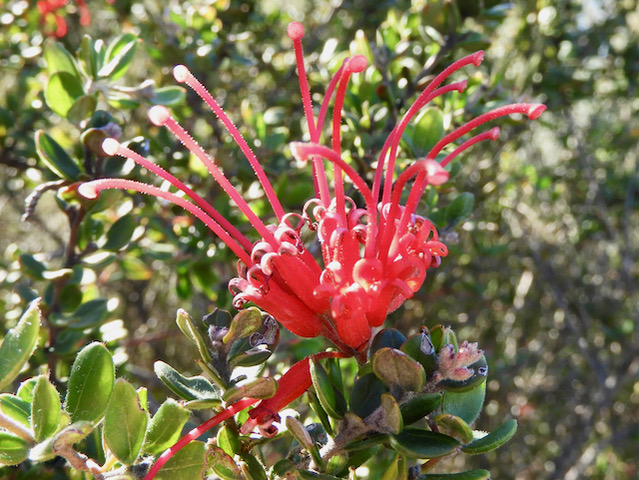
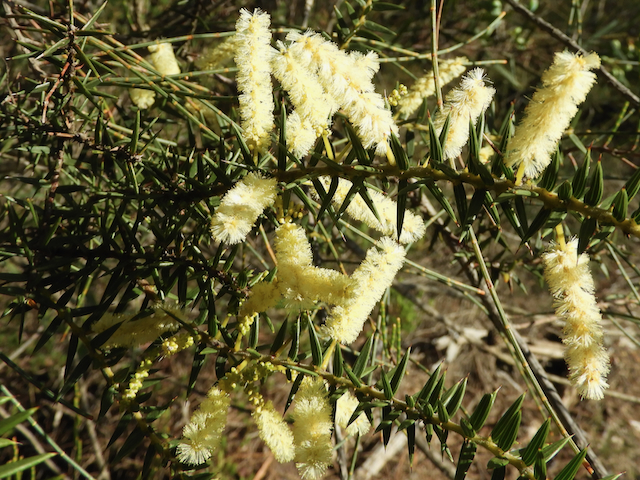
The second walk was to a huge rock platform, just at the start of the Warrah Trig road. For me, this was the pick of the spots, such a huge array of different plants and plant communities, with a lovely view out over Broken Bay as a bonus.
The weather was perfect on both days, dry, sunny, and not too hot and most of the heavy rain they had had a week or so before had soaked away. In some places, the rock resembled a Turtle shell, with a tessellated appearance. Some areas were miniature moss gardens with seepage allowing several Drosera species to persist. Even to a non-expert like me, I could identify 6 or 7 species all flowering at once in a small spot, with many other plants in the background. On the short walk through the trees back to the track, saw my first Waratah of the year.
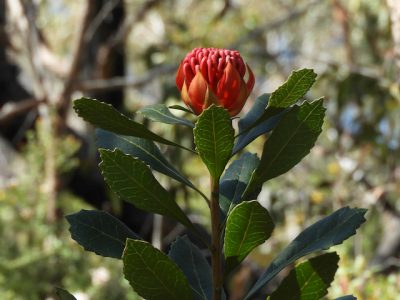
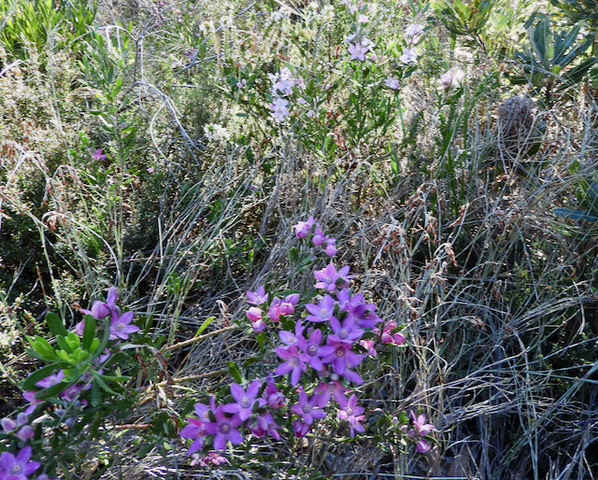
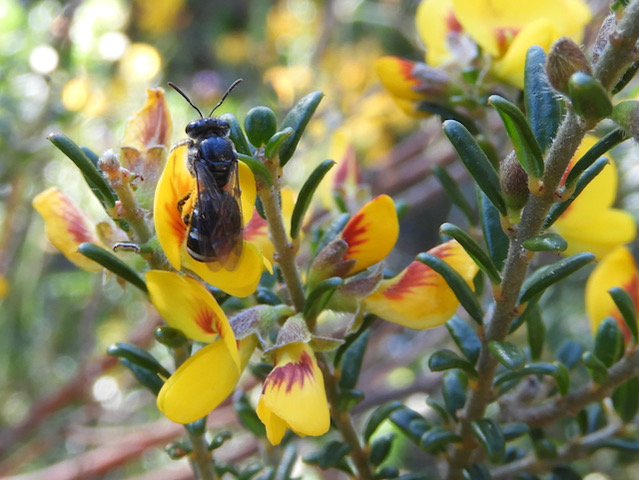
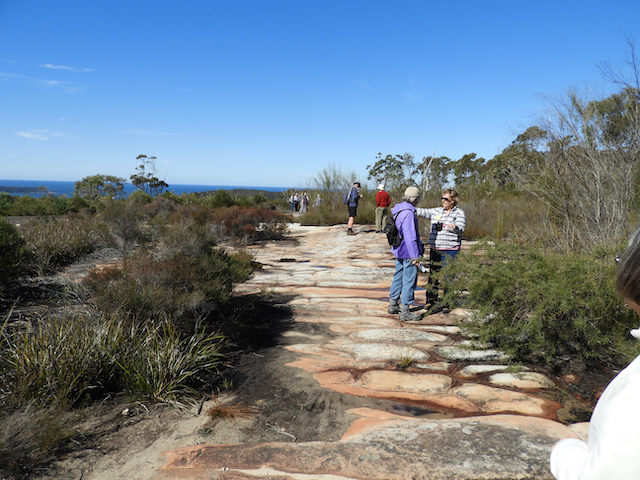
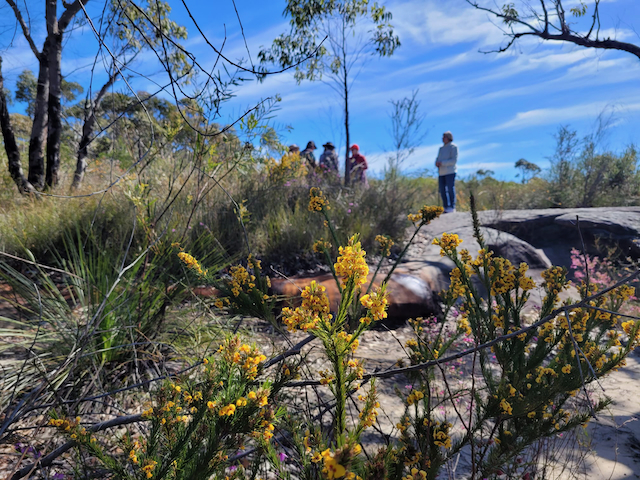
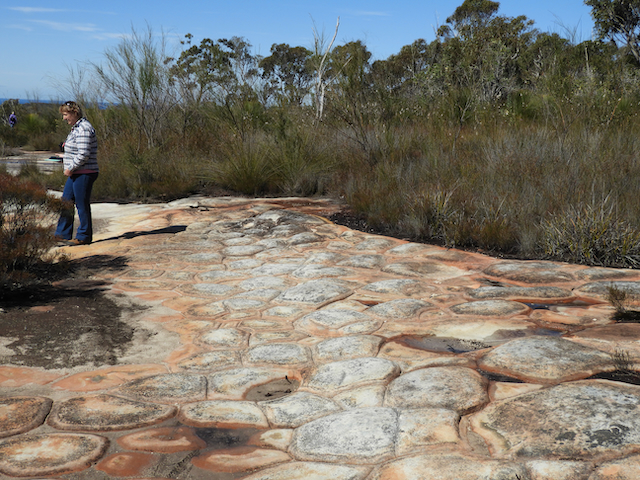
After our picnic lunch at the Mt Penang gardens (toilets and coffee shop), the final walk for the day was the 2km Girrakool loop track at Somersby. Here I had my first look at a rare plant, Darwinia procera, which grows in a very restricted area and was only formally described by Barbara Briggs in 1962. This is another plant that I might consider growing in my garden if I can find a spot. Very attractive flowers, leaves and habit.
Dinner that night at the local RSL and then on Sunday, the first walk was a 1.5km return walk along the Wyrrabalong Coastal track through a range of habitats where we saw several new plants, including some orchids, flannel flowers and several new peas.
The final walk of the weekend was the 3km loop walk near McMasters beach along some fire trails. They had been very recently widened and graded, so there were not a great deal of new plants to see. The highlight of this walk for me, was a sighting of a spectacular colour form of Eriostemon australasius amongst the more normal paler pink forms. So even if not an expert in a particular genera, well worth joining one of the many study groups and taking advantage of the expertise of members and discover new plants and areas. Most study groups are free to join for APS members.
